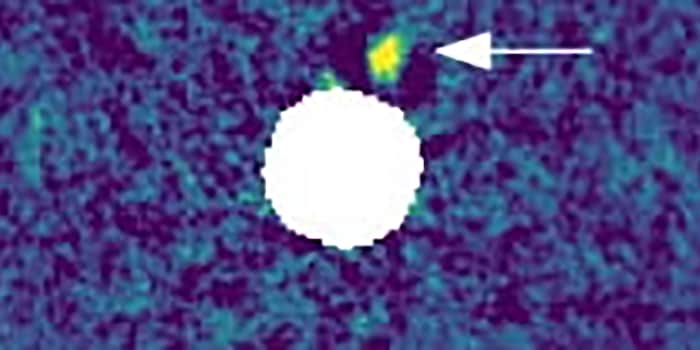
Brown dwarf orbits red dwarf
A "failed" binary star is the system of J1446, from which we are separated by around 55 light years. It consists of a red dwarf and a brown dwarf that has too little mass for nuclear fusion.
The Keck and Subaru telescopes, which are both located on the summit of the 4200 metre high Mauna Kea in Hawaii, have successfully detected a brown dwarf orbiting a red dwarf in the J1446 system. The red dwarf has 46 per cent of the mass of the sun, making it one of the more massive representatives of its kind. Its companion J1446 B orbits the main star at an average distance of 4.3 astronomical units (this corresponds to 4.3 times the distance between the Earth and the Sun) once in around 20 years.
With 60 times the mass of Jupiter, it is too low in mass to initiate the fusion of hydrogen to helium in its interior; the pressure and temperature in its centre are not sufficient for this. J1446 B therefore only emits the heat from its formation and compression heat from slow contraction. It therefore belongs to the star class of brown dwarfs, whose masses are between 14 and 80 Jupiter masses. Only above around 80 Jupiter masses are the pressure and temperature in a star high enough to start nuclear fusion, the energy source of most stars.
J1446 B lacks around 20 Jupiter masses, which means that the J1446 system can also be described as a «failed binary star» due to the unequal mass distribution between the components, with one partner falling short. The brown dwarf shows changes in brightness of up to 30 per cent. There may be storms or clouds on it similar to those on Jupiter, but much larger and more intense.
Only a few brown dwarfs or massive planets around red dwarfs have been discovered so far, but they are probably not that rare. This is suggested by analyses of recent observations. The team led by Taichi Uyama from California State University in Northridge discovered J1446 B using data from the Gaia astrometry satellite, which pointed to a companion. Further information was provided by spectroscopic data from the Subaru telescope, but it was only with the highly developed adaptive optics of the Keck telescopes that it was finally possible to directly image J1446's companion. The light from the much brighter main star had to be faded out to make the faint companion visible.
Spectrum of Science
We are partners of Spektrum der Wissenschaft and want to make well-founded information more accessible to you. Follow Spektrum der Wissenschaft if you like the articles.
Original article on Spektrum.de
Experts from science and research report on the latest findings in their fields – competent, authentic and comprehensible.
From the latest iPhone to the return of 80s fashion. The editorial team will help you make sense of it all.
Show all